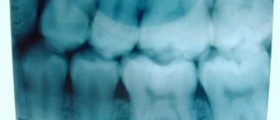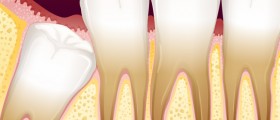Wisdom tooth removal is a relatively simple operation that needs a short period which commonly leads to a full recovery. However, as in any surgical procedure, complications are possible even in wisdom teeth removal. Some of them can be rather serious, but those are usually rare.
About one in 20 people have complications after wisdom teeth removal and they are more serious if the person has more than 25 years and if the teeth are set deep inside the bone.
Wisdom Teeth Surgery Complications
One of the most common complications is related to the anesthetic. Some people are allergic to it and they need to inform the surgeon or dentist about the allergy.

Another complication may arise if the teeth that need to be removed are located in the upper jaw. They are set close to the sinuses and sometimes the root may even go into it, and following the procedure, there is a possibility of infection spreading to the sinuses.
There is a possibility that a tooth or bone fragment may penetrate the sinus and needs to be removed, usually by irrigation.
Numbness or nerve damage may occur as a result of lower wisdom teeth removal. This happens because the nerves are located close to the root or the part of the law that needs to be surgically treated. In one of 100 cases, the numbness is permanent and others recover within three months.
People who do not follow the surgeon’s instructions following the procedure are at risk of developing a dry socket, a painful complication that occurs when the blood clot does not set properly into the wound.
- This retrospective study assessed the complications occurring during the removal of 1,562 maxillary wisdom teeth in 1,212 patients.
- A total of 543 cases of surgical removal and 1,019 cases of non-surgical removal were analyzed. In all cases, a pre-operative panoramic radiograph was taken.
- Anatomical and clinical parameters were included in the evaluation. 106 complications occurred in 92 patients (5.9%) of the total 1,562 operations.
- Of these complications, 5.1% were intra-operative and 0.8% postoperative.
- An oroantral fistula (OAF) was found in 38 cases (2.4%), and alveolar osteitis occurred post-operatively in 6 cases (0.4%). The risk of OAF correlated with increasing patient age (p=0.0368). Root fractures also increased the risk of OAF.
Oher Possible Complications
There is a possibility, although rare, that the jaw bone may fracture after the procedure. Removal of a wisdom tooth can sometimes weaken the bone that fractures while chewing normal solid food.
Infection is another possible complication that occurs in one or two out of 100 cases. The signs of infection are pain, fever, swelling, and a bad, sometimes salty taste in the mouth. There may or may not be a discharge from the extraction site.
Other teeth can sometimes suffer injury or damage during wisdom teeth removal. It happens even to the best surgeons at some point.
Sometimes, there is a root fragment still left inside after the procedure. It is usually located close to the nerve or the sinus and is monitored by X-ray. If it causes problems it can be removed.
Bleeding is normal after the surgery, however, if it persists and if it is heavy, the patient will need to contact the surgeon or the dentist.
Other complications include air embolism, headache, dizziness and vertigo, trigeminal nerve damage, hematoma, angioedema, and the most dangerous (and fortunately extremely rare) are brain damage and death.

















Your thoughts on this
Loading...